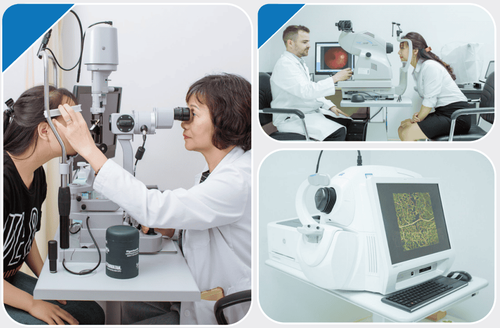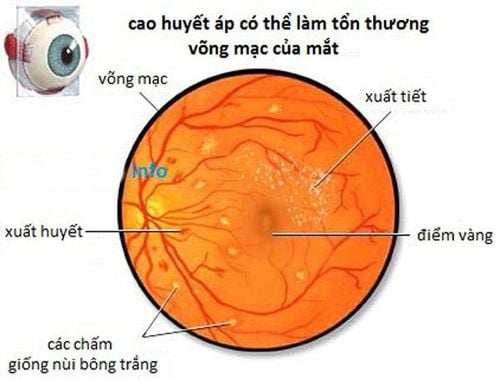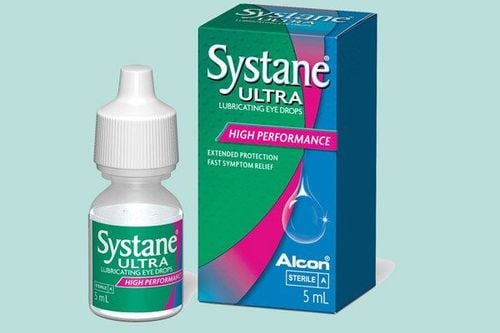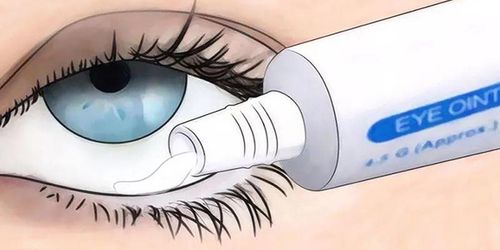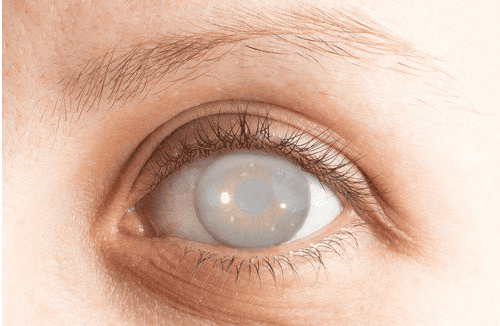This is an automatically translated article.
The article was professionally consulted by Specialist Doctor II Nguyen Thai Hung - Department of Medical Examination & Internal Medicine - Vinmec Danang International Hospital.Dry eye disease is a common disease that is common in many people today, especially office workers because they often have to sit in front of a computer screen. Although dry eye disease is not too dangerous, it will cause symptoms of fatigue, eye pain, and burning eyes, reducing work performance. Even more seriously, the patient may have vision loss.
1. What is dry eye disease?
Dry eye disease is a collection of symptoms related to tears and ocular surface, is damage to the tear film by decreased tear secretion or increased evaporation, causing inflammation of the eye surface. lead to unpleasant symptoms for the eyes.Many people think that tears only appear when crying. Actually not so, on the surface of the eyes is always covered with a layer of tear film including water, oil, protein, salt, mucus that is responsible for lubricating, keeping the eyes moist, clean, preventing Dust, bacteria attack and nourish the corneal surface.
Dry eyes can be caused by the following:
Age: Dry eyes are part of the natural aging process, most people > 65 years old will have some symptoms of dry eyes. Gender: Women are more susceptible to dry eyes due to hormonal changes after pregnancy, oral contraceptive use, and menopause. Drugs: Using antihistamines, anti-inflammatory drugs, antihypertensives, and pain relievers can reduce the amount of tears produced. Especially the problem of using eye drops without an ophthalmologist's prescription. Due to systemic or eye diseases: People with rheumatoid arthritis, diabetes and thyroid damage may have dry eye syndrome. Inflammation of the eyelids, surface of the eyeball, or abnormalities of the eyelids (blumps, clefts) are also causes of dry eyes. Working and living environment conditions: Exposure to tobacco smoke, high winds or dry weather will cause rapid evaporation of tears. Working at a computer for a long time or working too hard to blink often also contributes to dry eyes. Other Predisposing Factors: Prolonged use of contact lenses is a predisposing factor for dry eyes. Surgery on the surface of the conjunctiva, cornea such as Lasik surgery, phaco surgery ... can be the cause of progressive dry eyes.

2. Diagnosing dry eye
Diagnosis of dry eye must be based on a comprehensive eye exam, along with tests to determine the quantity and quality of the tear film including:Taking the patient's history of symptoms of discomfort, diseases Systemic history, previous drug use especially eye drops, and living and working environmental factors also contribute to dry eye. Examination of the outside of the eyeball: Abnormalities when the eyelids work (with the eyelids turned out, with the eyelids open when the eyes are closed ...) and the blinking frequency. Evaluation of lesions of the eyelids and corneal conjunctiva: Must use microscopy with slit lamp and high magnification 10 or 16 times. Assessment of abnormalities in the quantity and quality of tears: Tests should be performed by an ophthalmologist to determine if there is dry eye and to provide advice and treatment.
3. Complications of dry eye disease
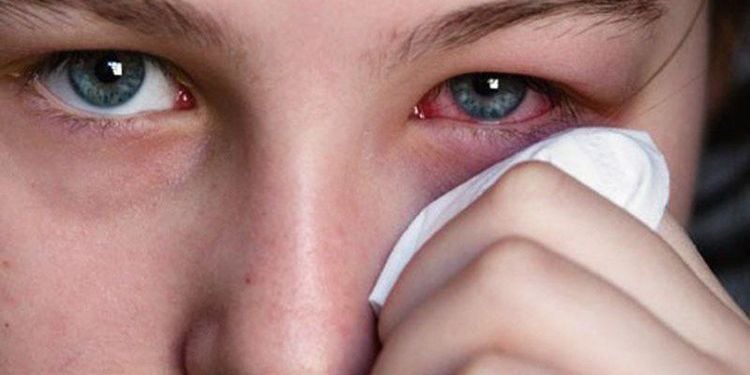
Although this disease is not too dangerous, it will cause symptoms of fatigue, eye pain, burning eyes, reducing work performance. In more severe cases, the patient may experience reduced vision.
This disease, if not treated properly and promptly, can lead to complications such as:
Conjunctivitis: Most cases of dry eye conjunctivitis are very mild and may not require treatment. However, when the disease gets worse and becomes chronic, you need to see an ophthalmologist. Keratitis: is a serious complication of dry eye disease if left untreated or unresponsive to medication. Keratitis combined with dry eyes can lead to corneal scarring, making the cornea more susceptible to inflammation that affects vision.
4. Treatment of dry eyes
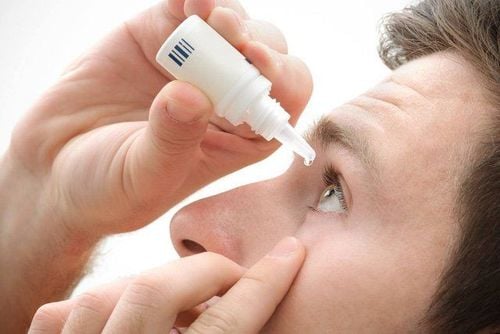
Supplemental artificial tears: Mild cases of dry eye can be treated with artificial tears and can be used regularly. It is best to use artificial tears without preservatives because preservatives will be toxic to the eyes with prolonged use. However, in cases of moderate to severe dry eye, the use of replacement artificial tears is not sufficient, and additional methods are needed. Tear film maintenance: One method to relieve the uncomfortable symptoms of dry eye is to keep the natural tears in the eye for a long time. This can be done by preventing tears from flowing through the tear ducts by means of: Sealing the tear points with a Silicon stopper; Surgery to close the tear permanently. Increased tear production : Eye drops to increase tear production can be used as prescribed by an ophthalmologist. Treatment of inflammation of the eyelids and ocular surface: It is necessary to use ointments or ointments to lubricate the eyes according to the prescription of an ophthalmologist. Methods such as warm compresses, eyelid massage, eyelid washing will help reduce inflammation around the eyes. In addition, patients need to clean their eyes daily with warm water, do not rub their eyes when they feel uncomfortable because dirt can cause corneal scratches, and often wear protective glasses when going out. It is necessary to pay attention to nutrition and drink enough water, eat a lot of green vegetables and fruits to supplement vitamins to improve dry eyes. If dry eyes persist for a long time, it can cause corneal damage and immunosuppression, so when you see a dry feeling like sand or foreign objects in your eyes, eye pain, burning eyes and a lot of tears, you need to seek medical help. basis for timely examination and treatment.
Eye specialties at Vinmec International General Hospital are the leading medical facilities in the country in the examination and treatment of eye-related diseases, with comprehensive quality in both expertise and medical services.
Eye specialist at Vinmec has comprehensive vision and eye health care functions for children, adults and the elderly including: refractive error check, laser treatment and surgery. In addition, the department also has the task of coordinating with other clinical departments in the treatment of pathological complications and eye injuries caused by accidents.
Besides, the team of Ophthalmologists here are experienced doctors who have implemented many types of surgery from routine to difficult surgeries, especially techniques that require aesthetics. . With enthusiasm and love for the profession, the team of doctors working at Vinmec always gives customers the best services with the highest service quality.
Specialist II Nguyen Thai Hung has 13 years of experience as an eye doctor at C Hospital Da Nang and Ngu Hanh Son General Hospital - Da Nang. Currently working as an Ophthalmologist at the Inter-specialty Clinic of Medical Examination - Internal Medicine, Vinmec International General Hospital Da Nang.
Please dial HOTLINE for more information or register for an appointment HERE. Download MyVinmec app to make appointments faster and to manage your bookings easily.





